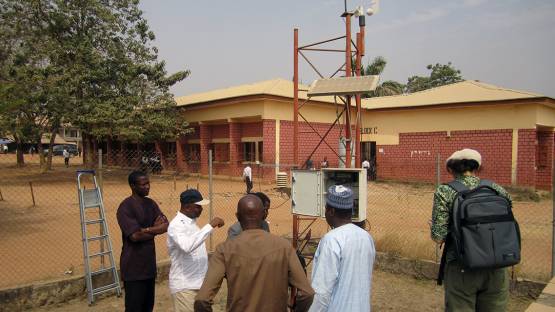The theme of this year’s World Water Day — ‘Leaving no one behind’ — addresses the reasons why millions of people continue to live without access to safe water at home. To improve water availability and water quality management, the IAEA is working with countries to tackle their specific water-related needs and help them secure sustainable water for all by 2030.
The IAEA Water Availability Enhancement Project (IWAVE) helps scientists and policy-makers better understand their hydrological resources and provides reliable tools to improve the management of those resources. Currently 15 countries in Africa, Latin America and Asia are applying the IWAVE methodology. Although each country is at different project stage, some already show promising results.
Earlier this year, the IAEA, in collaboration with the Nigeria Hydrological Services Agency, held an IWAVE workshop in Nigeria attended by more than 130 national stakeholders, including the Nigerian Minister of Water Resources, Suleiman Adamu, high-level officials from the water sector, policy-makers, scientists and technical experts.
Nigeria, the country with the highest population and the largest economy in Africa, faces various water-related challenges, from water scarcity in the North to water pollution in the South. The water crisis is especially acute in the 21 million megacity Lagos; although the city is built around a lagoon, people are struggling to find water suitable for drinking and sanitation. According to the United Nations expert Léo Heller, only one in ten people are connected to piped networks, while the rest of the population rely on natural water sources for drinking water. Nigeria has also one of the highest child death rates from water-borne diseases in Africa.
In 2016, the Nigerian government finalized the National Water Resources Bill, the main objective of which is to establish a regulatory framework for equitable and sustainable development, management, use and conservation of Nigeria’s surface water and groundwater resources. The IAEA started working with relevant authorities last year to support their efforts by assisting them in applying IWAVE to optimise methodologies for utilizing isotope hydrology techniques.
“This is the first time IWAVE will be applied to assess the management of water resources of such a huge country,” said Oliver Kracht, Isotope Hydrologist at the IAEA. “We gathered useful information at the workshop that will now help us advise Nigerian water experts and decision-makers on producing a comprehensive hydrological action plan until the end of the year.”
By the end of 2019, five African countries will be applying the IWAVE methodology as part of an IAEA project in the Sahel region, which revealed that significant reserves of good quality groundwater are available in this drought-prone area.
Countries face different water-related challenges depending on their geographical location, climatic conditions, industrial development, and population, among others. To improve water availability, decision-makers need to understand how much water exists and where it comes from, if national water resources are sustainable for current and future uses, and their vulnerability to pollution, land-use and climatic changes. IWAVE helps countries to establish scientific methodology to answer these questions and to make an accurate assessment of national water resources. This is especially important for groundwater assessment as isotope studies in many cases are the only practical means to accurately confirm age, recharge rates and residence time of aquifers (see Isotope hydrology).
Sustainable Development Goal (SDG) 6 includes access to safe water for everyone by 2030. Statistics from the Global Water Institute, however, suggest that 700 million people worldwide could be displaced by intense water scarcity by 2030. How decision-makers tackle this will be the main question addressed on today’s World Water Day.
This will be also one of the topics discussed at the International Symposium on Isotope Hydrology. Watch the event live on 20 to 24 May 2019.
For more information, visit this year’s World Water Day website.
For more information on our work in this field, visit our website.





